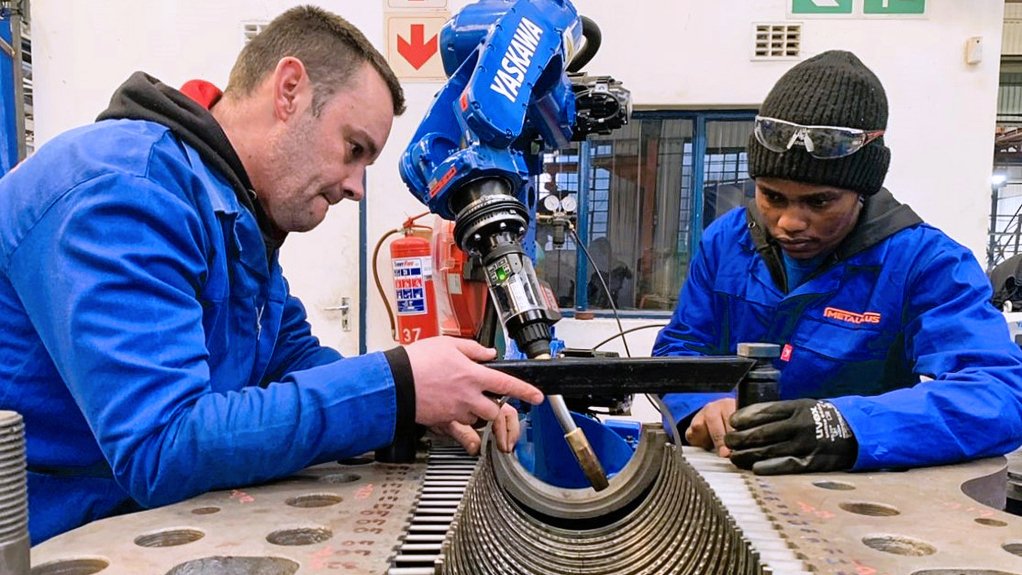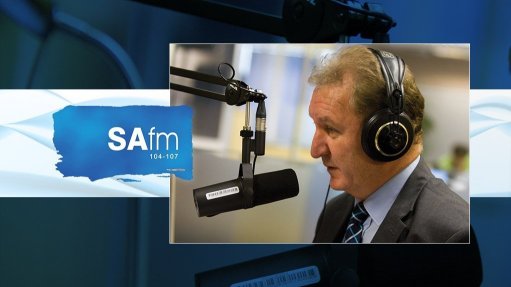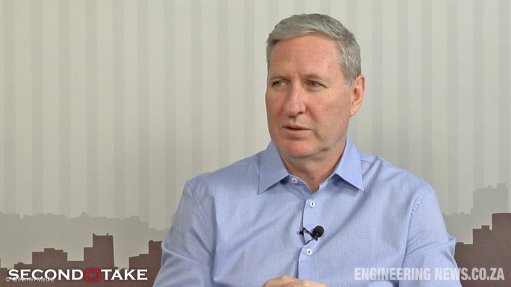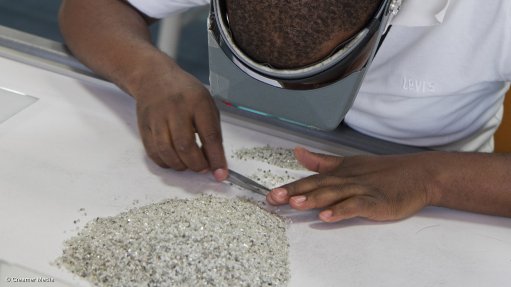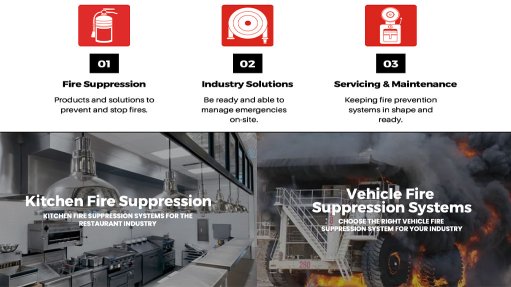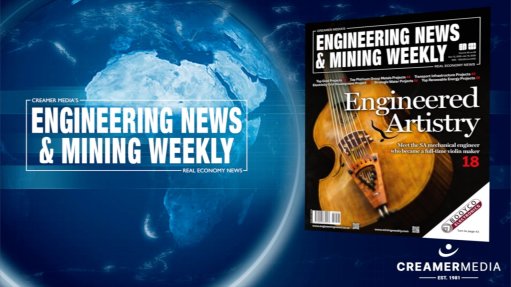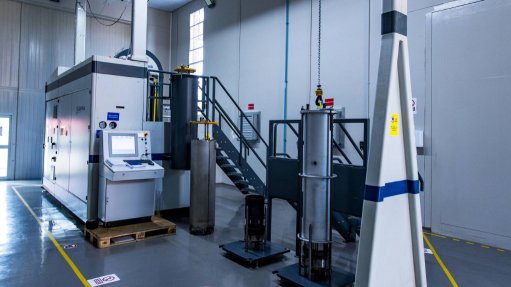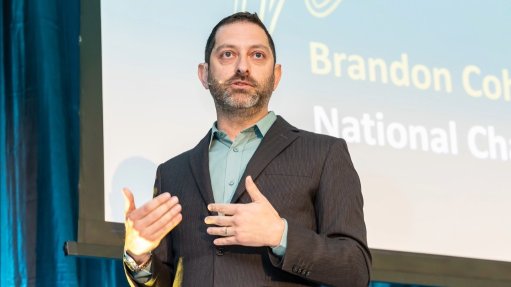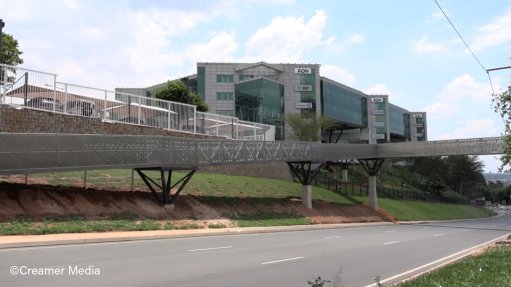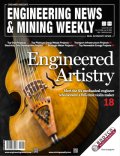The impact of modern welding techniques on resource conservation and sustainability for high-cost industry assets
This article has been supplied.
By: Roman Mornau - General Manager at MetalPlus, ACTOM
Welding technologies can play an increasingly vital role in optimising resource utilisation and enhancing sustainability for capital-intensive industry assets. Beyond traditional methods, advanced welding techniques such as Submerged Arc Welding (SAW), Cold Metal Transfer (CMT), and Laser Welding are revolutionising repair practices, enabling precise interventions with minimal material removal. This shift from replacement to repair extends the service life of critical equipment, reduces waste, and minimises the environmental impact associated with the production of new components for the power generation, petrochemical, mining, electrical machines, locomotives, and manufacturing industries.
Repair vs replace - reinventing the sustainable choice
Prioritising repair over replacement in high-cost industries offers numerous advantages. By extending the life cycle of components, it is possible to reduce the environmental footprint while providing industries with reliable, rapid, and cost-effective local repair services. This approach aligns with the principles of a circular economy, where materials are effectively reused and repurposed.
Consider the stark contrast between the disposal of a smartphone and the decommissioning of an industrial machine. Smartphones are often replaced prematurely due to fashion trends, even when fully functional. In contrast, industrial machinery, frequently comprising massive components like 20-30 tonne shafts, demands a more sustainable approach. Scrapping and replacing these components necessitates significant energy and resources for smelting, manufacturing, and transportation, which must often be imported. Conversely, repair often involves adding only a few kilograms of welding material, extending the service life of the component by another decade or more.
A turning point for rail - localising locomotive repairs
A prime example of the success of this approach in South Africa can be seen in the repair of locomotive crankshafts. Once the crankshafts are excessively worn, these critical large components, up to 4 metres long in a 16-cylinder engine producing up to 3000hp, were previously replaced entirely, typically with imports from the United States. Our engineers have developed and tested a Submerged Arc Micro-Welding (SAMW) technique in the early 2000s, minimising heat input and distortion to successfully repair these crankshafts with phenomenal proven reliability and a zero-failure record.
Notably, the original equipment manufacturer initially resisted this repair method, fearing loss of revenue. However, the rail operator, Transnet, recognising the value and functionality of the repaired crankshafts, approved the process. This successful venture has not only reduced repair costs for the rail industry but also fostered local expertise, and reduced reliance on imports.
Building on this success, welding repair techniques have expanded to encompass a wide range of industries, from repairing small pumps to refurbishing massive turbines for the power generation sector. The key lies in selecting the most appropriate welding technique for each repair, minimising invasiveness and ensuring the repaired component will function as effectively as the original.
Overcoming the challenges of traditional welding
Historically, welding was perceived as an aggressive process, with high heat input leading to distortion and potentially rendering components inferior. However, advancements in welding technology have mitigated these challenges. Techniques such as submerged arc micro-welding, which minimise heat input and distortion, have enabled the repair of previously deemed irreparable components. We have welding techniques that renders the component stronger with the same fatigue life after the weld repair. Such innovation has not only reduced repair costs but also empowered South African industries to localise critical maintenance tasks previously reliant on imports.
The emergence of CMT and laser welding, with their even lower heat inputs, has further expanded the scope of repairable components. These technologies enable precise repairs with minimal heat-affected zones, minimising the risk of embrittlement in the material, further reduction in distortion and ensuring the integrity of the repaired component.
Alongside extending equipment lifespan and reducing material costs, these advanced welding techniques also contribute to improved operational efficiency. In high-value rotating equipment, conventional welding methods can introduce stresses and distortions that lead to premature failures but by employing more refined techniques, industries can minimise downtime and ensure the continued reliable operation of critical machinery.
Taking environmental impact and sustainability to new heights
The environmental benefits of this repair-focused approach are significant. Replacing a large component necessitates the extraction, processing, and transportation of raw materials, resulting in a substantial carbon footprint. In contrast, repairing often involves minimal material usage and significantly lower energy consumption, which reduces the overall environmental impact.
Looking ahead, laser welding technology holds immense promise. With its extremely low heat input, laser welding enables highly precise repairs with minimal distortion, further expanding the range of repairable components. The integration of robotics and automation further enhances accuracy and efficiency, while minimising associated operational risks as well as minimising waste.
Advanced welding techniques are not just tools for repair; they are critical enablers of resource conservation and sustainability for capital-intensive industrial machines. By embracing a repair-oriented approach and leveraging innovative technologies, South African industries can enhance their operational efficiency, reduce environmental impact, and contribute to a more sustainable and resilient industrial landscape.
Article Enquiry
Email Article
Save Article
Feedback
To advertise email advertising@creamermedia.co.za or click here
Comments
Press Office
Announcements
What's On
Subscribe to improve your user experience...
Option 1 (equivalent of R125 a month):
Receive a weekly copy of Creamer Media's Engineering News & Mining Weekly magazine
(print copy for those in South Africa and e-magazine for those outside of South Africa)
Receive daily email newsletters
Access to full search results
Access archive of magazine back copies
Access to Projects in Progress
Access to ONE Research Report of your choice in PDF format
Option 2 (equivalent of R375 a month):
All benefits from Option 1
PLUS
Access to Creamer Media's Research Channel Africa for ALL Research Reports, in PDF format, on various industrial and mining sectors
including Electricity; Water; Energy Transition; Hydrogen; Roads, Rail and Ports; Coal; Gold; Platinum; Battery Metals; etc.
Already a subscriber?
Forgotten your password?
Receive weekly copy of Creamer Media's Engineering News & Mining Weekly magazine (print copy for those in South Africa and e-magazine for those outside of South Africa)
➕
Recieve daily email newsletters
➕
Access to full search results
➕
Access archive of magazine back copies
➕
Access to Projects in Progress
➕
Access to ONE Research Report of your choice in PDF format
RESEARCH CHANNEL AFRICA
R4500 (equivalent of R375 a month)
SUBSCRIBEAll benefits from Option 1
➕
Access to Creamer Media's Research Channel Africa for ALL Research Reports on various industrial and mining sectors, in PDF format, including on:
Electricity
➕
Water
➕
Energy Transition
➕
Hydrogen
➕
Roads, Rail and Ports
➕
Coal
➕
Gold
➕
Platinum
➕
Battery Metals
➕
etc.
Receive all benefits from Option 1 or Option 2 delivered to numerous people at your company
➕
Multiple User names and Passwords for simultaneous log-ins
➕
Intranet integration access to all in your organisation



